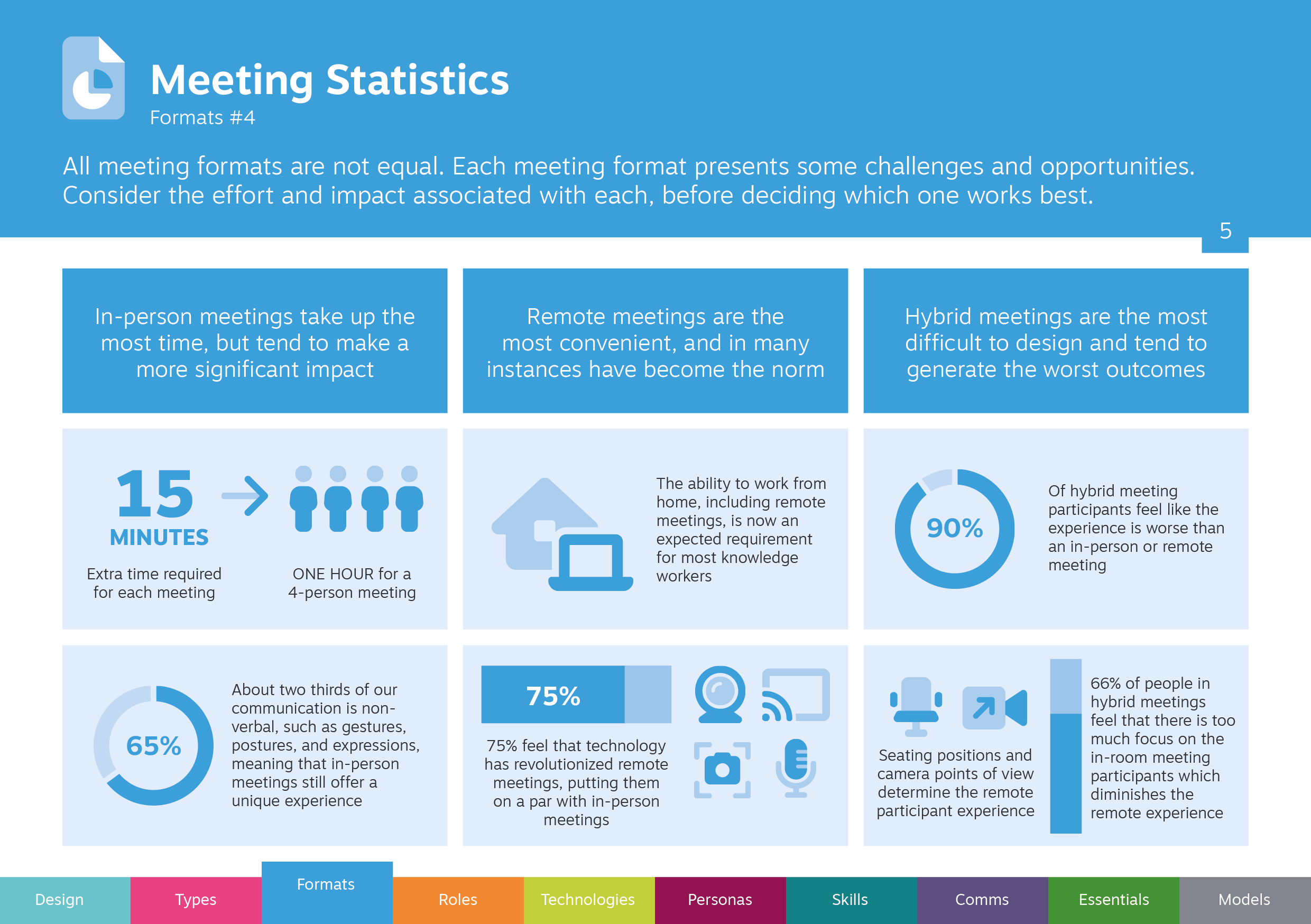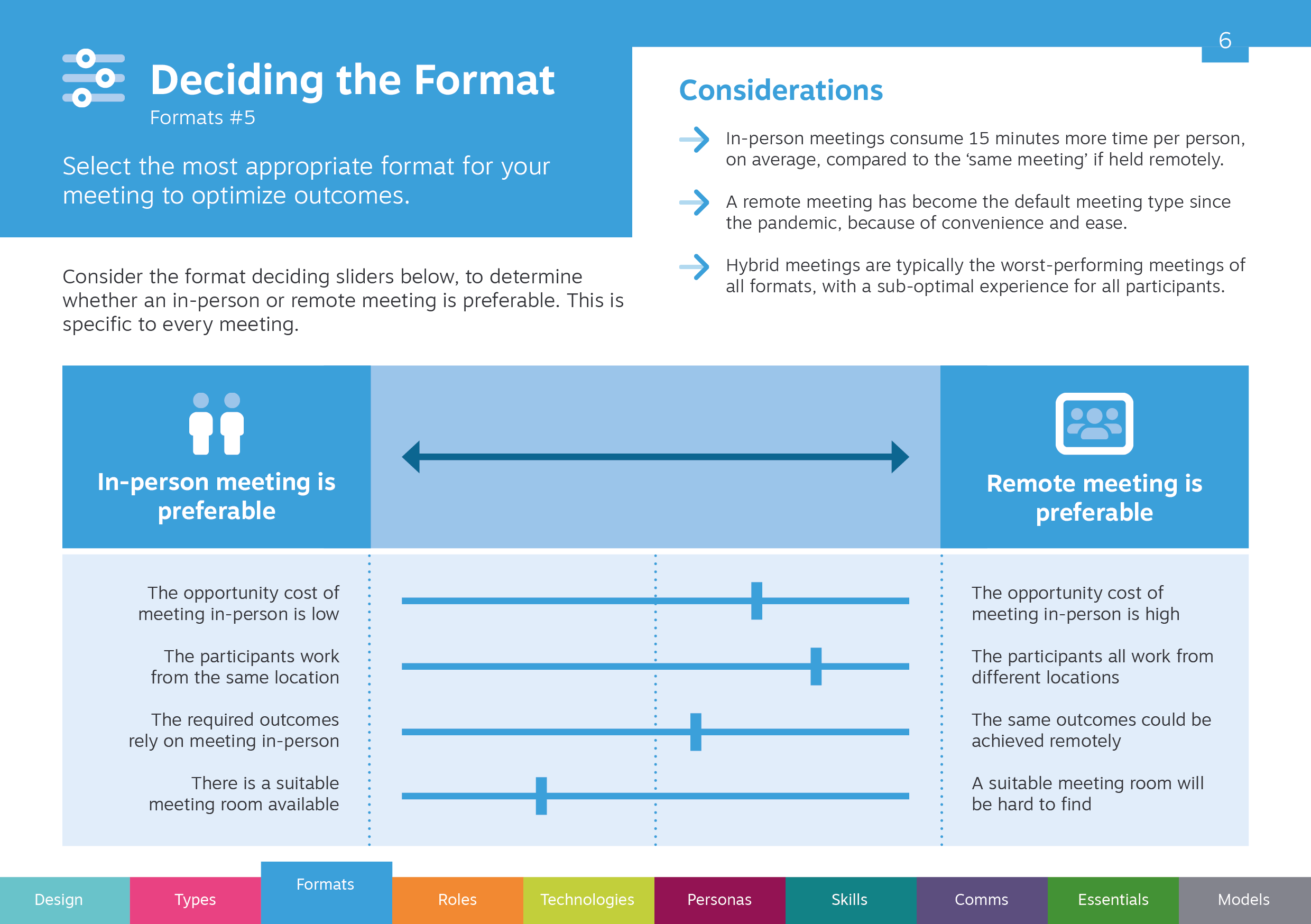Previously, we’ve stated that all formats are not equal, and we’ve considered the individual formats of in-person, remote, and hybrid meetings. Take a look at the All Formats Are Not Equal card.

Where possible, the chosen Meeting Format needs to be the most appropriate fit for the Meeting Type.
We’ve already discussed the fact that an in-person meeting in the only choice in certain circumstances, and while hybrid meetings get a lot of bad press because they are the most complex meetings to design and orchestrate, they can be used effectively in specific instances.
Today, many of us most frequently lead, or participate in, remote meetings because we work remotely for at least some of the time. In our research, 75% of people surveyed felt that technology has revolutionized remote meetings, putting them on a par with in-person meetings. That doesn’t mean either meeting type is consistently well-designed, or the meeting experiences are great. It just means we’re more comfortable with the technology and the features and functionality on offer, and we consider the experiences of either meeting type to be similar; that could be good, bad, or indifferent.
If we agree that hybrid meetings shouldn’t be consigned to the scrap heap but have specific use cases where they can perform well, then the choice is really between an in-person or a remote meeting.
If you take a look at the Deciding the Format card in the Meeting Formats section, you’ll see the concept of sliders as a tool to help you make the decision between the two meeting types.
If an in-person meeting is required due to the sensitive nature of the discussion, then that is the deciding factor. However, in the majority of cases, you’ll consider the sliders individually, and collectively, to make your decision.
You can add your own slider criteria to customize the tool to your specific needs and circumstances.
